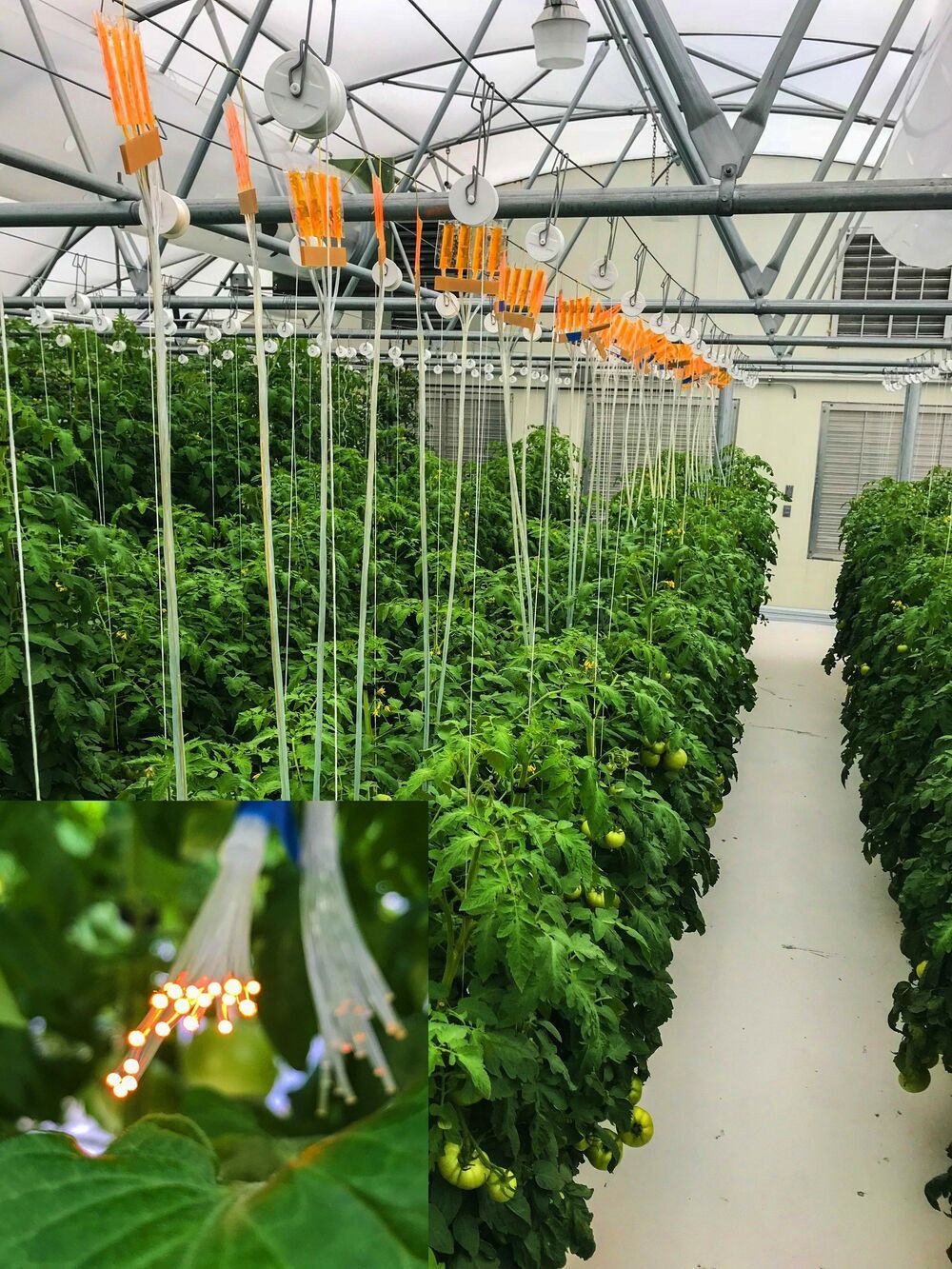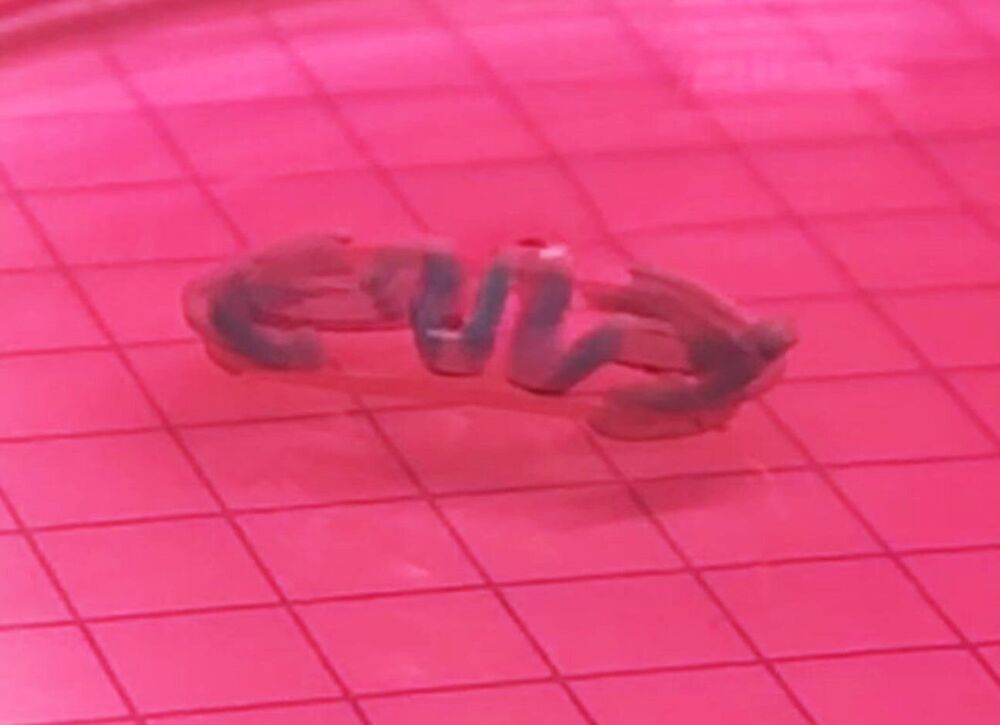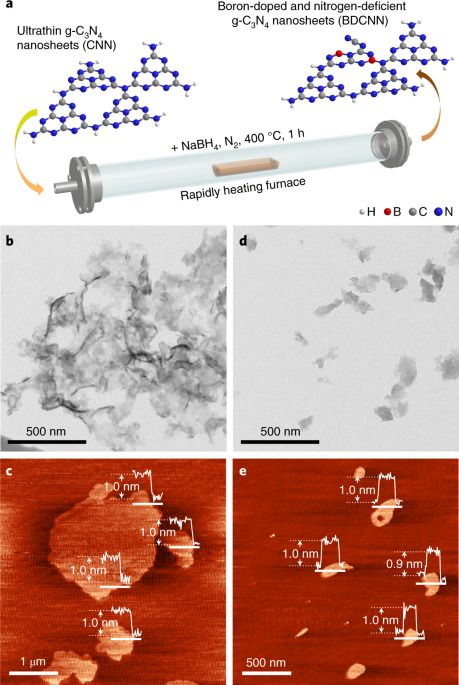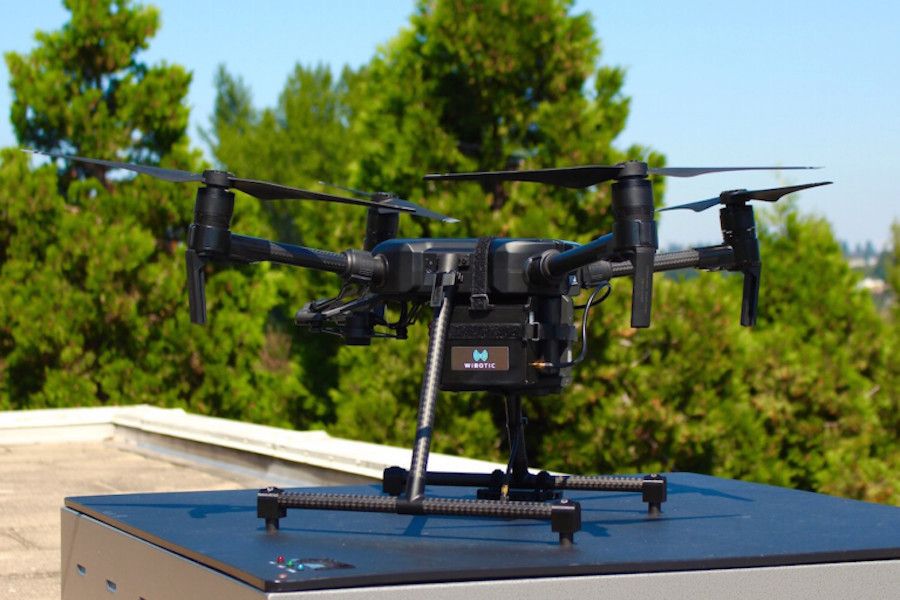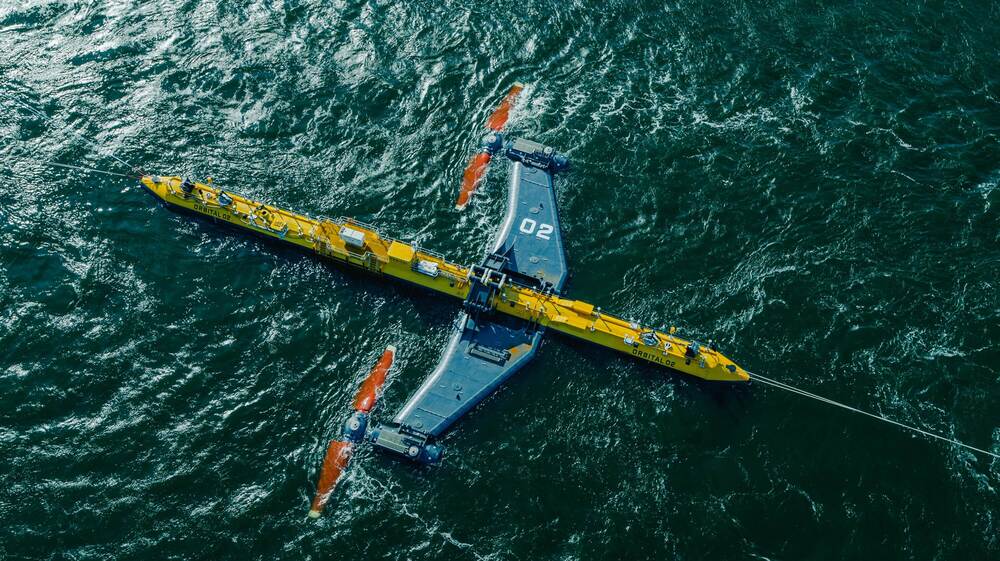Pyongyang’s recent ballistic missiles test indicated that the country is once again raising tensions to gain leverage with Washington.
Circa 2020
Nanotechnology development company UbiQD announced an optical fiber-coupled luminescent concentrator technology as a new tool for optimizing light in controlled environments, enabling light-guiding to future UbiGro spectrum-control greenhouse products.
A team of researchers working at Barcelona Institute of Science and Technology has developed a skeletal-muscle-based, biohybrid soft robot that can swim faster than other skeletal-muscle-based biobots. In their paper published in the journal Science Robotics, the group describes building and testing their soft robot.
As scientists continue to improve the abilities of soft robots, they have turned to natural materials such as animal tissue. To date, most efforts in this area have involved the use of skeletal or cardiac muscles—each have their strengths and weaknesses. Skeletal-muscle-based biobots have, for example, suffered from lack of mobility and strength. In this new effort, the researchers in Spain have developed a new design for a tinyskeletal-muscle-based soft robot that overcomes both issues and is therefore able to swim faster than others of its kind.
To make their biobot, the researchers used a simulation to create a spring-based spine for a swimming creature shaped like an eel. The simulation allowed the researchers to optimize its shape. They then 3D printed the skeleton (which was made of a polymer called PDMS) and used it as a scaffold for growing skeletal muscles. The finished robot was approximately 260 micrometers long—its shape allowed for propulsion in just one direction. The biobot moves when given electrical stimulation; the charge incites the muscle to contract, which compresses the skeletal spring inside. When the stimulation is removed, the energy in the spring is released, pushing the biobot forward.
A group of researchers in Florida may have found a way to control the weather, through the use of dual lasers.
Are we gonna get paid just to live in an automated world?
We may need to pay people just to live in an automated world, says Elon Musk. He reckons the robot revolution is inevitable and it’s going to take all the jobs.
For humans to survive in an automated world, he said that governments are going to be forced to bring in a universal basic income—paying each citizen a certain amount of money so they can afford to survive. According to Musk, there aren’t likely to be any other options.
Splitting water using suspensions of particulate carbon nitride-based photocatalysts may be a cheap way to produce hydrogen, but efficiencies have remained low. Now, Shen and colleagues use doped carbon nitride-based Z-scheme heterostructures to split water with a solar-to-hydrogen efficiency of 1.1% in the presence of metal-based co-catalysts.
Wireless Charging Keeps Drones Flying
Posted in drones
The demand for more efficient recharging solutions is constantly increasing, aiming at leading the next generation of drones towards greater autonomy.
We do a fundraiser for the collection of support signatures for the admissions of the German Party for Health Research to the German federal election and to the state elections in Berlin and Thuringia. Those three elections take place on September 26th 2021.
Attention: According to the law, we are not allowed to receive more than 1000 Euro per year per donor from donors, who live outside the European Union.
Unlike in other countries, in Germany parties with 5 % of the votes or more get into parliament and can be part of the government (a government coalition). Also parties get funds from the state, if they receive at least 0.5 % of the votes in the federal election or at least 1 % of the votes in a state election.
The donations are needed in a large part to hire people, who help to collect the required support signatures.
The goal of the fundraiser is 45 thousand Euro. That is 3000 Euro per state for the federal election for our 13 state associations and 3000 Euro for each of the two state elections.
A tidal turbine weighing 680 metric tons and dubbed “the world’s most powerful” has been launched from the Port of Dundee in Scotland, marking another significant step forward in the development of the U.K.’s marine energy sector.
In an announcement Thursday, Scottish firm Orbital Marine Power said its 2 megawatt (MW) turbine, the Orbital O2, would now be towed to the Orkney Islands, an archipelago north of mainland Scotland, for commissioning.
The plan is for the turbine to then be connected to the Orkney-based European Marine Energy Centre, where it will become operational.
“Cutting edge technology” reveals how scribes foiled modern scholars with one of the Biblical texts.

